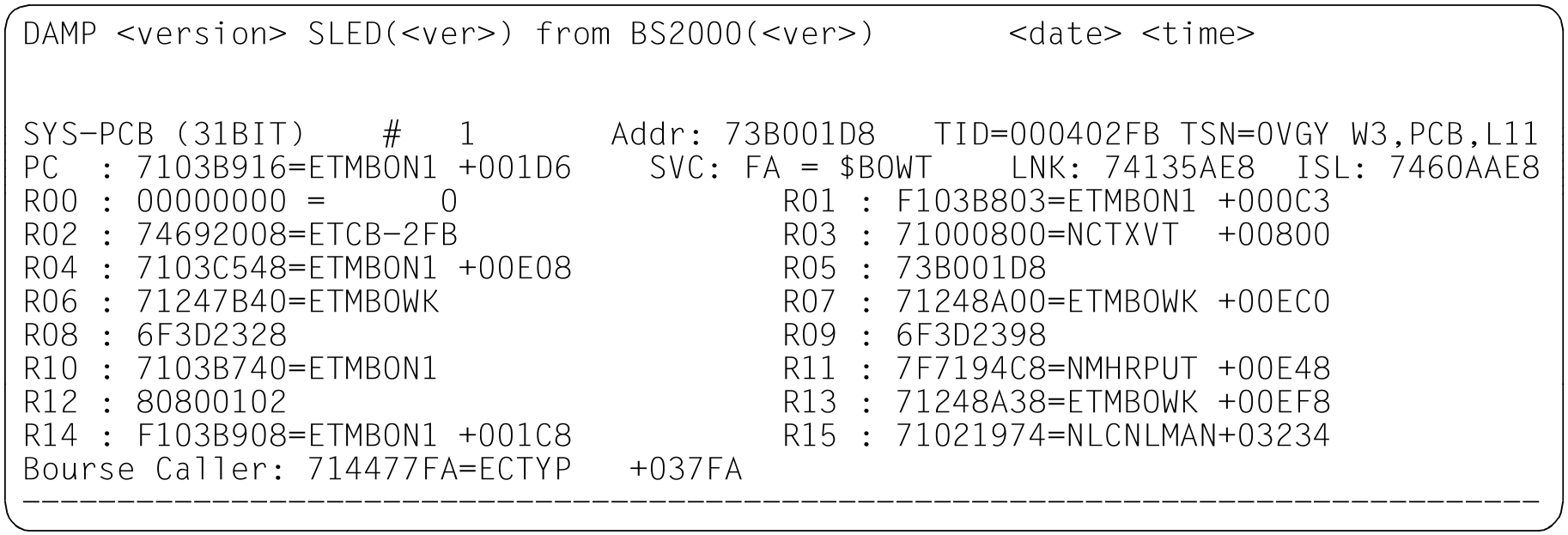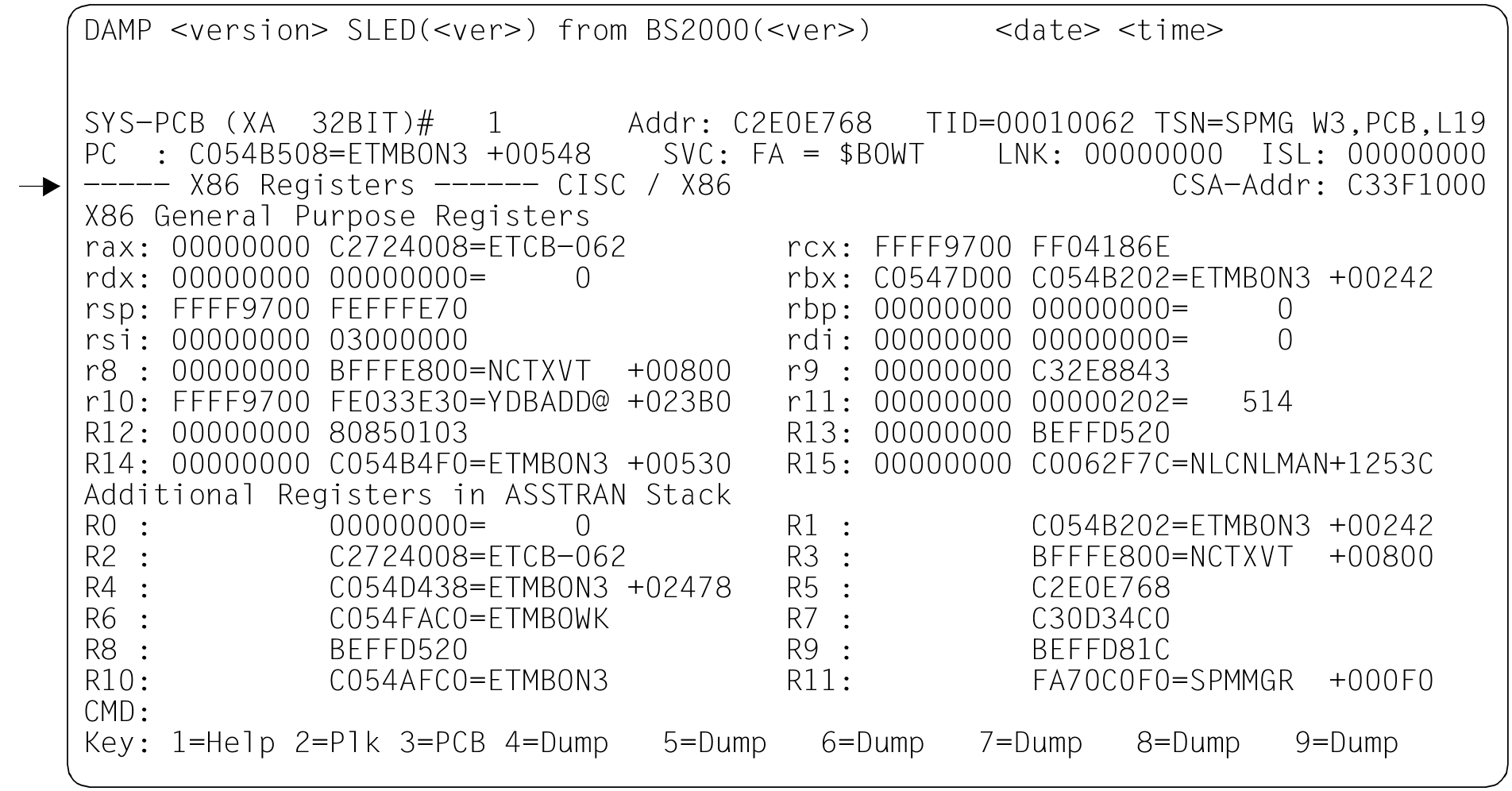The stack window displays the contents of the first TU or TPR stack or the contents of the TU or TPR stack that was selected and marked in window W2 (PCB mode), or the contents of a TPR program manager stack (SPL mode). The remaining information depends on the mode selected in the status window (W2).
Figure 21: Stack window (W3) with a PCB
Figure 22: Stack window (W3) with a program manager stack
The stack window (W3) has the input fields “Stack #”, “TID”, “TSN”, “Stack select” and “Window length”.
Figure 23: Input fields in the header line of the stack window
Switching from one output format to another is achieved by overwriting the entry “PCB” in the input field “Stack select” in the header line of the stack window with “SPL” or vice versa, and then hitting the key.
If possible, register contents are interpreted and output as addresses or decimal values. All the fields in the output can be marked.
In order to display a memory area in one of the standard dump windows (W4-W9, W21-W99), highlight the address field and assign it an output window, see the section "Marking" (Modifying the diagnostic windows).
If the access register mode flag (AR mode flag) is set in the PCB being displayed, and if the access register of the same name contains a value (ALET) other than zero, the act of marking a general-purpose register immediately assigns the corresponding data space and displays it in the requested window.
The access registers are “behind” the general-purpose registers in the stack window if the AR mode flag is set in the PCB.
If the AR mode flag is not set in the PCB, the access registers can be found in the PCB under the symbolic name ESTKARx(x=0,1,...15).
Notes
A PCB with an x86 context is presented with all 16 registers of x86 mode. An example of this is shown in figure 24. As a /390 context can be contained in registers r12 - r15, these registers are displayed in /390 register notation (R12 - R15). All other registers have the x86-specific names.
The contents of /390 registers R0 - R11 are not stored in x86 registers by the firmware, but in the ASSTRAN stack. These areas are also displayed in x86 mode.
Because of the ASSTRAN optimizations, the memory areas from which DAMP obtains the contents of the /390 registers are not updated immediately each time a change occurs. Consequently the /390 registers cannot be used for reliable diagnosis in x86 mode. In this mode only the x86 registers permit reliable diagnosis!
The type of register context shown is displayed in a special header line. You can select the context required by marking it:
CISC
x86/390 register in word length
x86 register in double word lengthYou can also page forward and back between contexts using “>” and “<”.
The special header line also contains the markable address of the CSA (Context Save Area). This is marked with an arrow in the left-hand margin in figure 24.
Figure 24: Example of a PCB stack window showing an x86 context




